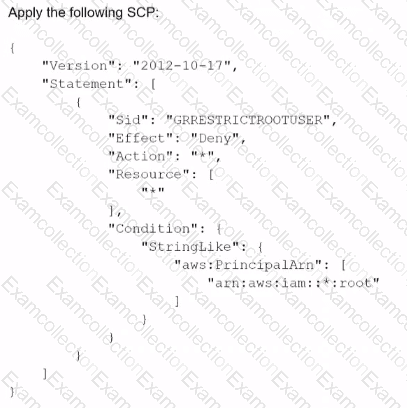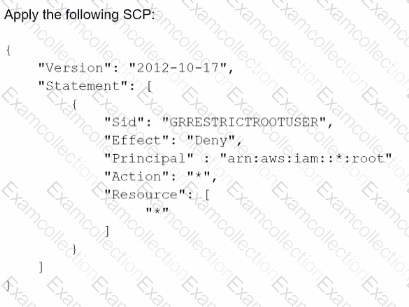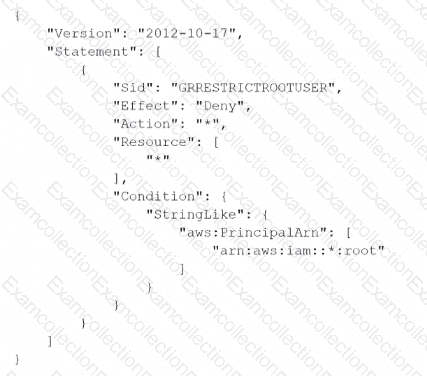Amazon Web Services SCS-C02 - AWS Certified Security - Specialty
Total 467 questions
Which of the following bucket policies will ensure that objects being uploaded to a bucket called 'demo' are encrypted.
Please select:
A company is storing data in Amazon S3 Glacier. A security engineer implemented a new vault lock policy for 10 TB of data and called the initiate-vault-lock operation 12hours ago. The audit team identified a typo in the policy that is allowing unintended access to the vault.
What is the MOST cost-effective way to correct this error?
A company hosts business-critical applications on Amazon EC2 instances in a VPC. The VPC uses default DHCP options sets. A security engineer needs to log all DNS queries that internal resources make in the VPC. The security engineer also must create a list of the most common DNS queries over time.
Which solution will meet these requirements?
A company has deployed servers on Amazon EC2 instances in a VPC. External vendors access these servers over the internet. Recently, the company deployed a new application on EC2 instances in a new CIDR range. The company needs to make the application available to the vendors.
A security engineer verified that the associated security groups and network ACLs are allowing the required ports in the inbound diction. However, the vendors cannot connect to the application.
Which solution will provide the vendors access to the application?
A security engineer discovers that the Lambda function is failing to create the report. The security engineer must implement a solution that corrects the issue and provides least privilege permissions. Which solution will meet these requirements?
A security engineer has enabled IAM Security Hub in their IAM account, and has enabled the Center for internet Security (CIS) IAM Foundations compliance standard. No evaluation results on compliance are returned in the Security Hub console after several hours. The engineer wants to ensure that Security Hub can evaluate their resources for CIS IAM Foundations compliance.
Which steps should the security engineer take to meet these requirements?
A security engineer is setting up an AWS CloudTrail trail for all regions in an AWS account. For added security, the logs are stored using server-side encryption with AWS KMS-managed keys (SSE-KMS) and have log integrity validation enabled.
While testing the solution, the security engineer discovers that the digest files are readable, but the log files are not. What is the MOST likely cause?
A security engineer is defining the controls required to protect the IAM account root user credentials in an IAM Organizations hierarchy. The controls should also limit the impact in case these credentials have been compromised.
Which combination of controls should the security engineer propose?(Select THREE.)
A)

B)

C) Enable multi-factor authentication (MFA) for the root user.
D) Set a strong randomized password and store it in a secure location.
E) Create an access key ID and secret access key, and store them in a secure location.
F) Apply the following permissions boundary to the toot user:

An Incident Response team is investigating an IAM access key leak that resulted in Amazon EC2 instances being launched. The company did not discover the incident until many months later The Director of Information Security wants to implement new controls that will alert when similar incidents happen in the future
Which controls should the company implement to achieve this? {Select TWO.)
A company is using AWS Organizations to create OUs for its accounts. The company has more than 20 accounts that are all part of the OUs. A security engineer must implement a solution to ensure that no account can stop to file delivery to AWS CloudTrail.
Which solution will meet this requirement?



